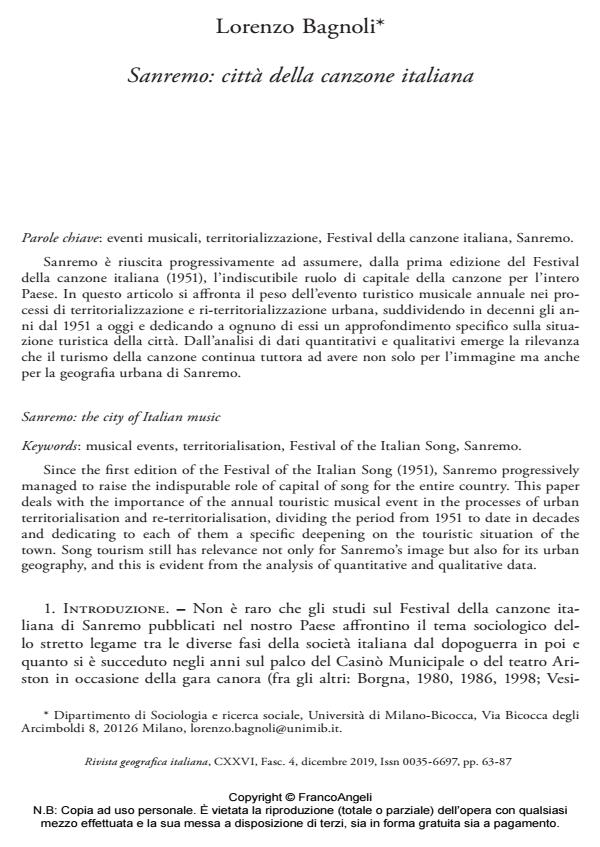Sanremo: the city of Italian music
Journal title RIVISTA GEOGRAFICA ITALIANA
Author/s Lorenzo Bagnoli
Publishing Year 2019 Issue 2019/4
Language Italian Pages 25 P. 63-87 File size 145 KB
DOI 10.3280/RGI2019-004004
DOI is like a bar code for intellectual property: to have more infomation
click here
Below, you can see the article first page
If you want to buy this article in PDF format, you can do it, following the instructions to buy download credits

FrancoAngeli is member of Publishers International Linking Association, Inc (PILA), a not-for-profit association which run the CrossRef service enabling links to and from online scholarly content.
Since the first edition of the Festival of the Italian Song (1951), Sanremo progressively managed to raise the indisputable role of capital of song for the entire country. This paper deals with the importance of the annual touristic musical event in the processes of urban territorialisation and re-territorialisation, dividing the period from 1951 to date in decades and dedicating to each of them a specific deepening on the touristic situation of the town. Song tourism still has relevance not only for Sanremo’s image but also for its urban geography, and this is evident from the analysis of quantitative and qualitative data.
Keywords: Musical events, territorialisation, Festival of the Italian Song, Sanremo.
Lorenzo Bagnoli, Sanremo: città della canzone italiana in "RIVISTA GEOGRAFICA ITALIANA" 4/2019, pp 63-87, DOI: 10.3280/RGI2019-004004